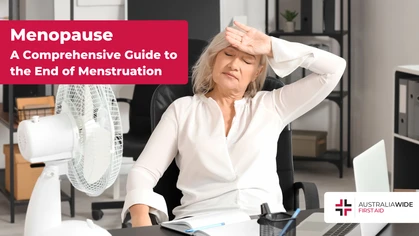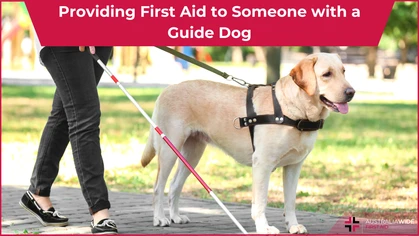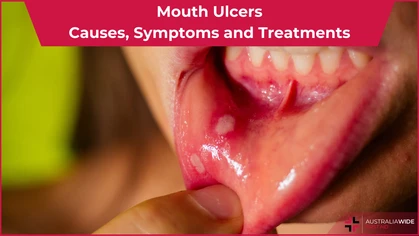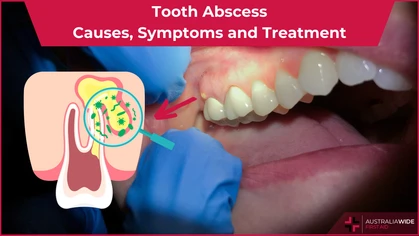Prescription Drug Misuse

General Health-Related

According to the Australian Institute of Health and Welfare, 1 in 10 Australians have used opioids for non-medical purposes, while stimulants accounted for the highest number of hospitalizations amongst drug usage.
Prescription drugs are medications that require health professional prescription for a patient to manage their health conditions. These medications often have a recommended safety profile and are expected to be taken as they are prescribed. However, because of lax regulations, these precautions can often be intentionally or unintentionally ignored. This leads to prescription drug abuse. Prescription drug abuse occurs when medication is used inappropriately or in a way not originally intended by a healthcare professional. Medication abuse can take many forms. Examples include using a friend’s medication to relieve your own pain or trying to get high off a prescription drug. In recent years, there has been a growing increase of doctors in Australia prescribing medication. This can often lead to abuse. A 2017 study by Addiction Center found that doctors wrote 14,000,000 opioid prescriptions. Of these prescriptions, 10% of these individuals become addicted to their prescription. Furthermore, 69% of drug related deaths involved prescription drug abuse.Misconceptions about Prescription Drugs
Misconception 1:
Medication is safer than illicit drugs.Fact:
Medicine prescribed by doctors are often subject to strict regulations. However, health and government agencies do not monitor how the end user decides to intake the medication. As a result, prescription drugs have a potential to be as dangerous as illegal drugs.Misconception 2:
Prescription drug abuse is not as bad as illicit drug abuse.Fact:
Similar to the first misconception, prescription drug abuse has a potential to be as dangerous as illegal drug abuse. This is untrue because all drugs can come with side effects. If used not as intended, drugs can lead to dependency or overdose.Misconception 3:
It is difficult to develop dependence on medication.Fact:
Depending on the side effects, there is a potential to develop dependence on any medication. This is due to the withdrawal symptoms that can be associated with the prescription drug. Ask your healthcare provider to provide information on the medication they are prescribing you to see if withdrawal will be an issue.Commonly Abused Prescription Drugs
Many different types of prescription drugs can be abused. The top three most abused prescription drugs are opioids, anti-anxiety medication, and stimulants.- Opioids – Used as a form of pain alleviation, opioids attach receptors to the central nervous system. This is to prevent the pain from receiving pain signals. Opioids can trigger light feelings of joy. Some examples of opioids include Oxycontin, Percocet, and Norco.
- Anti-anxiety medication – Used to treat anxiety or sleep disorders, anti-anxiety medication slows down brain activity. Taking this medication induces feelings of calm or drowsiness. Some examples of anti-anxiety medication include Xanax, Valium, and Ambien.
- Stimulants – Used to treat attention-deficit hyperactivity disorder and other sleep disorders, stimulants intensify brain activity to raise alertness, attention, and energy. Some examples of stimulants include Ritalin, Adderall, and Dexedrine.
Signs of Drug Abuse
Here are some general signs you can look out for if you are worried about potential prescription drug abuse:- Stealing, forging, or selling prescriptions
- Taking high doses of prescription
- Continuously “losing” prescriptions or requesting refills
- Asking for prescriptions from different doctors
- Appearing either high and unusually energetic or lethargic and sedated
Dangers of Misuse
Abusing prescription drugs can have severe adverse effects on your body. This can be seen in recent years as the increase of medication prescribed by health professionals leading to an increase in prescription overdose-related deaths and emergency room visits. General consequences of misusing prescription medication can include poor judgement, decreased work and academic performance, increased tolerance to the drug, addiction, and death. Drug-specific effects of prescription abuse include:- Opioids – decreases blood pressure which can cause breathing rate to slow or stop. This increases the potential for a coma. Overdosing on opioids increases potential for death.
- Anti-anxiety medications – negatively affects memory and decreases blood pressure which can slow down breathing. Overdosing on anti-anxiety medication can cause coma or death. Withdrawal from suddenly stopping intake of medication can cause nervous system hyperactivity or seizures.
- Stimulants – significantly raises body temperature, leading to heart problems, high blood pressure, seizures, tremors, and hallucinations.
How to Prevent Prescription Drug Abuse
It is easy to fall into the trap of unintentionally abusing prescription drugs. Perhaps you or someone you know would like to avoid potentially misusing medication. Here are some steps you can take to prevent prescription drug abuse.- Avoid purchasing prescriptions online if you can. The lack of regulation in online pharmacies makes the credibility of the medication dubious which can have dangerous side effects.
- Never use someone else’s prescription medication and never let anyone else use yours. Everyone’s reaction to medication is different. Even if you are diagnosed with the same condition, your bodily response will be different from everyone else.
- Use your medication as it was prescribed. Do not stop or increase your dosage if you think that your medication is not working. Make sure to ask your doctor first to see if your medication is working.
- Monitor your reaction to the medication. Make a mental note of any reactions, physical and emotional, you have to your new medication. If there are any abnormalities, bring it to your doctor’s attention. Knowing the side effects of the drug before taking your prescription will help you know the changes you can expect.
- Confirm that you are being prescribed the right medication. Having your doctor understand what symptoms needs to be treated will help them prescribe the correct medication for you. If you are worried about a potential addition problem, you can bring this issue up to your doctor. They will be able to see how they can help you with this problem.
- History or family history of substance abuse
- Peer-pressure involving drug use
- Easy access to prescription drugs
- Insufficient education on the effects of prescription drug use
- Pre-existing health conditions increasing possibility of addiction to drugs
The Rise of Prescription Drug Use
The increase of prescription drug use can be linked to the fact that there are more drugs available than before. In addition to the increased number of drugs, they are much more easily accessible than in the past. It has been reported that doctors have been writing more prescriptions than in the past. The biggest contributor to the increase in prescription drug use is the ease of access of these drugs. Prescription drugs can now be bought through online platforms. Medication might also be shared between family members and friends. This is dangerous because they may not be aware of the safety profile of these prescription drugs. To develop the confidence and know-how to assist someone in the event of a drug overdose, check out our Chart Library and book a First Aid course with us today!Sources
- https://www.addictioncenter.com/addiction/addiction-in-australia/
- https://www.aihw.gov.au/reports/illicit-use-of-drugs/opioid-harm-in-australia/summary
- https://www.aihw.gov.au/reports/australias-health/illicit-drug-use
Originally published at
https://www.australiawidefirstaid.com.au/resources/prescription-drug-misuse
as part of the Australia Wide First Aid Articles Library









